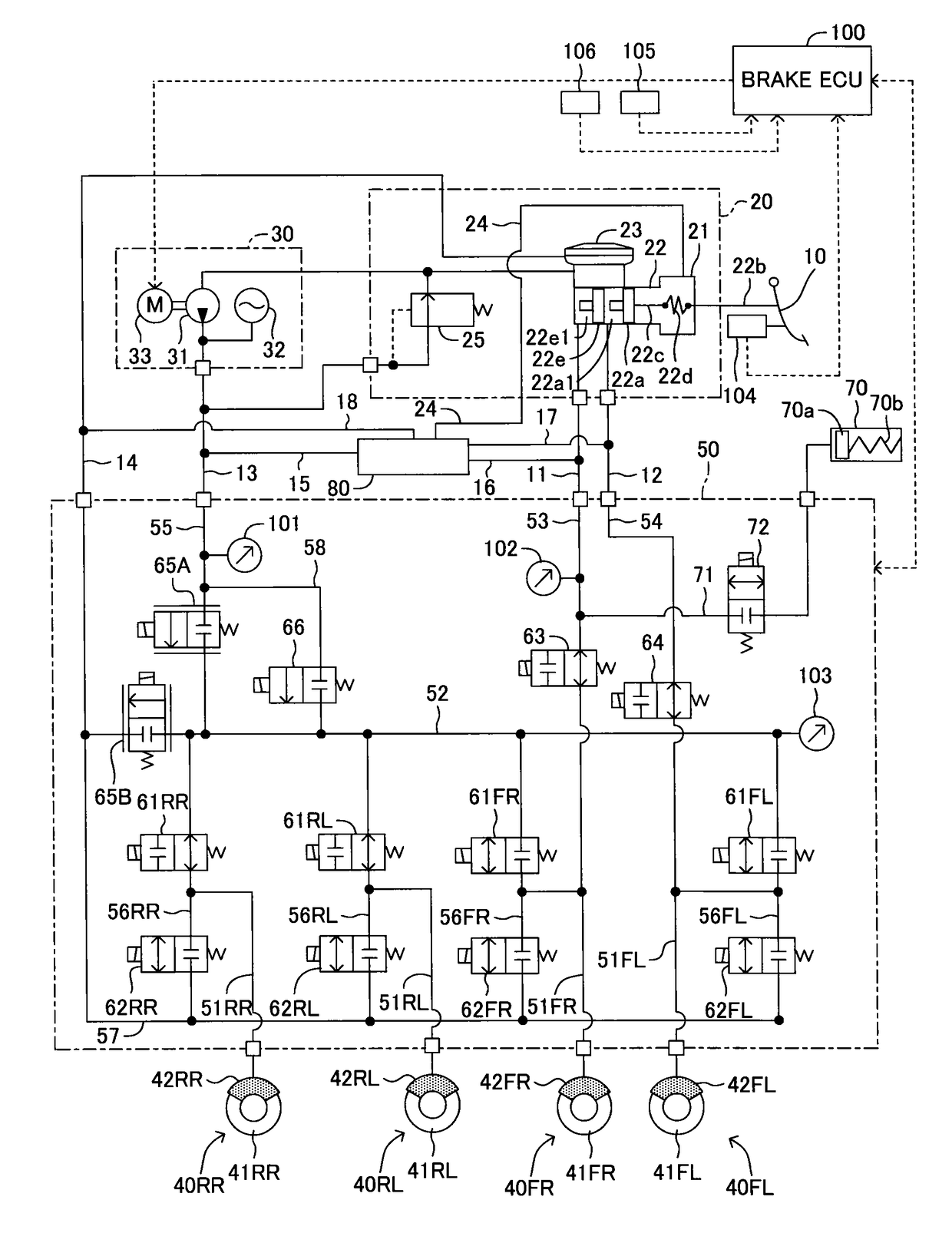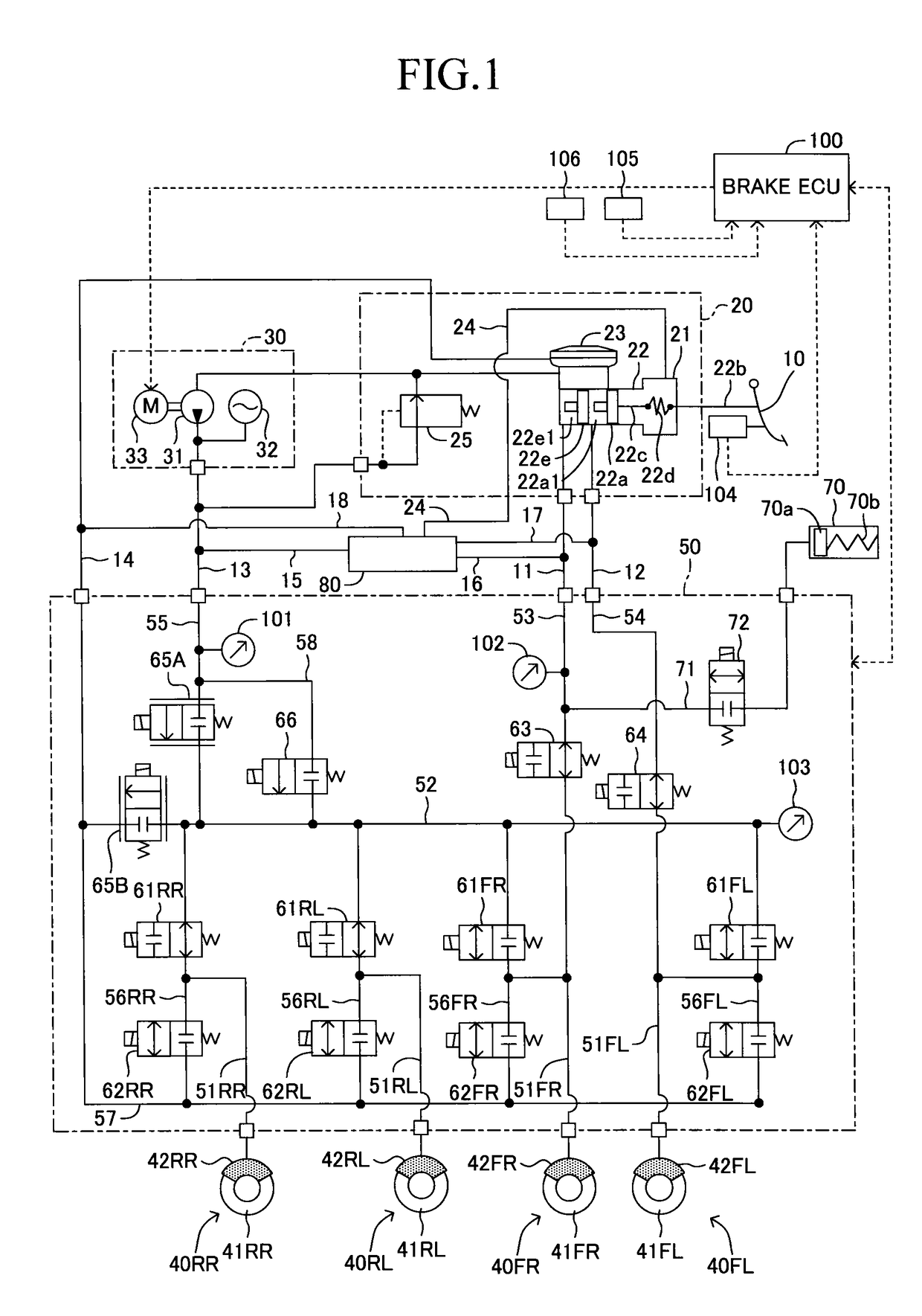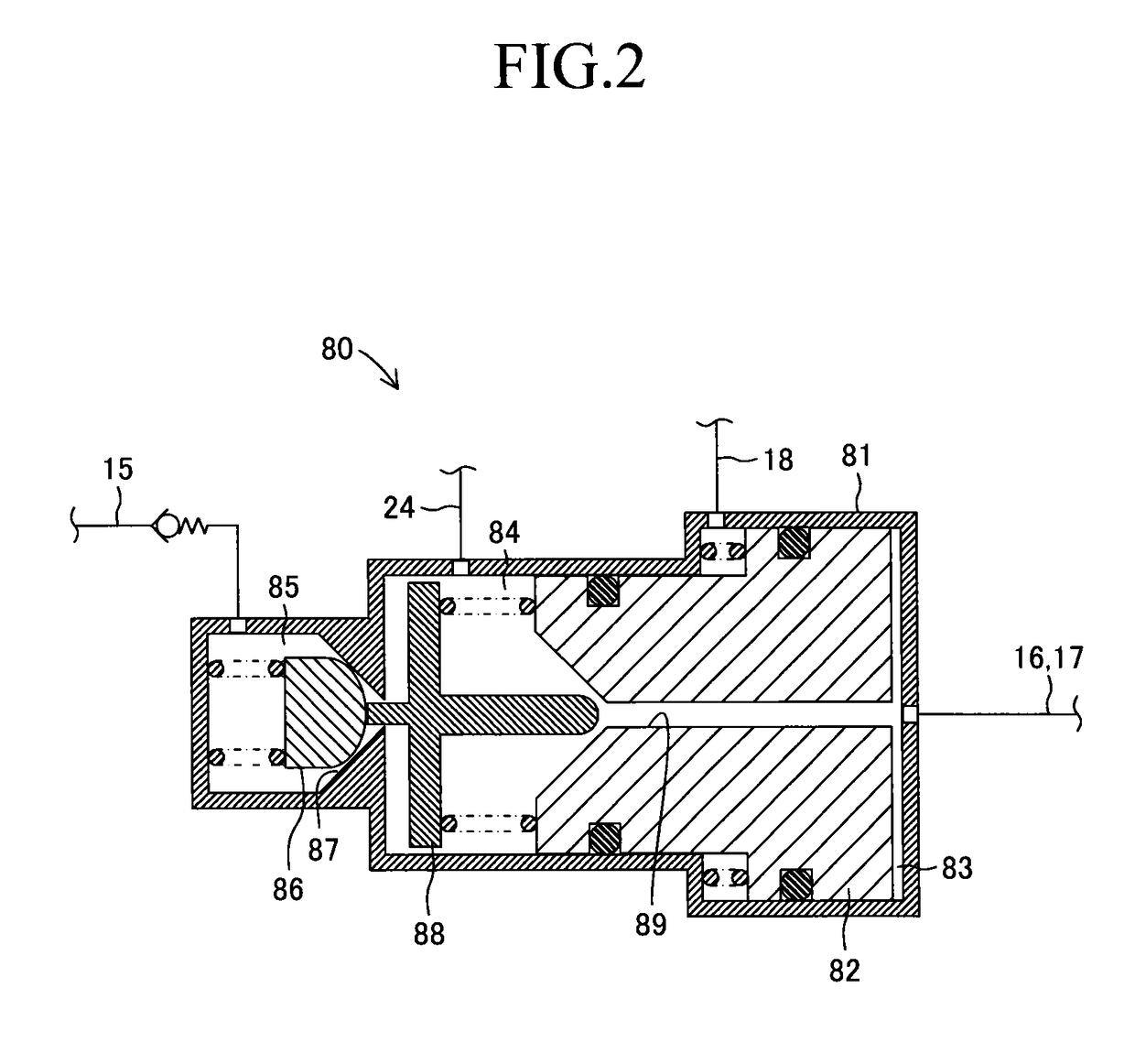Vehicle brake device
a technology for brake devices and vehicles, applied in the direction of brake action initiation, foot actuation initiation, vehicle components, etc., can solve the problems of increasing the cost of sensors and the inefficiency of normal brake systems without failure, and achieve the effect of increasing the cos
- Summary
- Abstract
- Description
- Claims
- Application Information
AI Technical Summary
Benefits of technology
Problems solved by technology
Method used
Image
Examples
Embodiment Construction
[0039]Now, a vehicle brake device according to an embodiment of the present invention is described referring to the drawings. FIG. 1 is a schematic system diagram of the vehicle brake device according to this embodiment.
[0040]The brake device according to this embodiment includes a brake pedal 10, a master cylinder unit 20, a power hydraulic pressure generation device 30, a hydraulic pressure control valve device 50, a pressure increasing mechanism 80, and a brake ECU 100 for brake control. Brake units 40FR, 40FL, 40RR, and 40RL installed on respective wheels include brake rotors 41FR, 41FL, 41RR, and 41RL, and wheel cylinders 42FR, 42FL, 42RR, and 42RL integrated into brake calipers. The brake units 40 are not limited to the case where disk brakes are installed on all the four wheels, and, for example, drum brakes may be installed on all the four wheels, or the disk brakes and the drum brakes may be arbitrarily combined in such a way that the disk brakes are installed on the front ...
PUM
 Login to View More
Login to View More Abstract
Description
Claims
Application Information
 Login to View More
Login to View More - R&D
- Intellectual Property
- Life Sciences
- Materials
- Tech Scout
- Unparalleled Data Quality
- Higher Quality Content
- 60% Fewer Hallucinations
Browse by: Latest US Patents, China's latest patents, Technical Efficacy Thesaurus, Application Domain, Technology Topic, Popular Technical Reports.
© 2025 PatSnap. All rights reserved.Legal|Privacy policy|Modern Slavery Act Transparency Statement|Sitemap|About US| Contact US: help@patsnap.com



